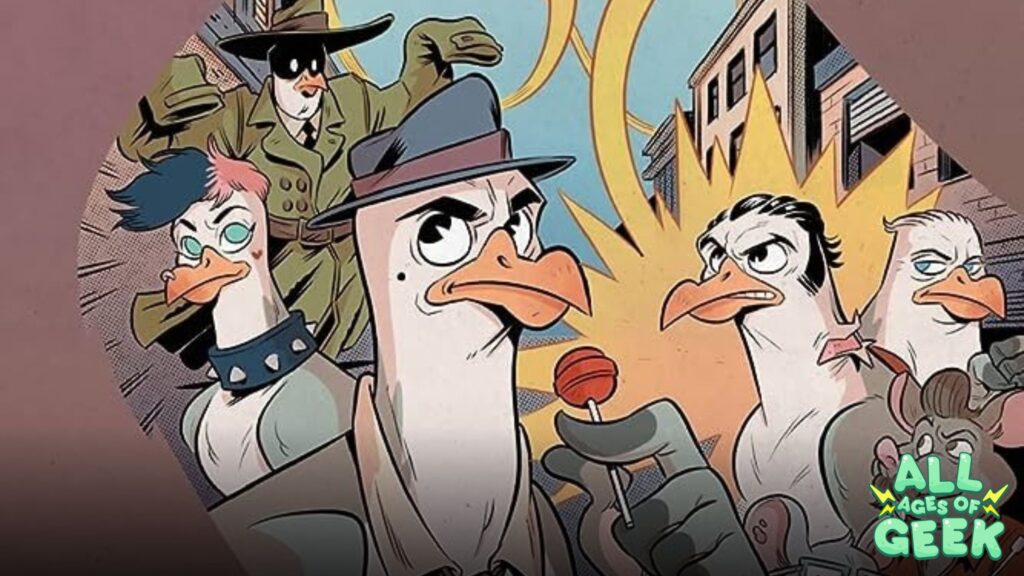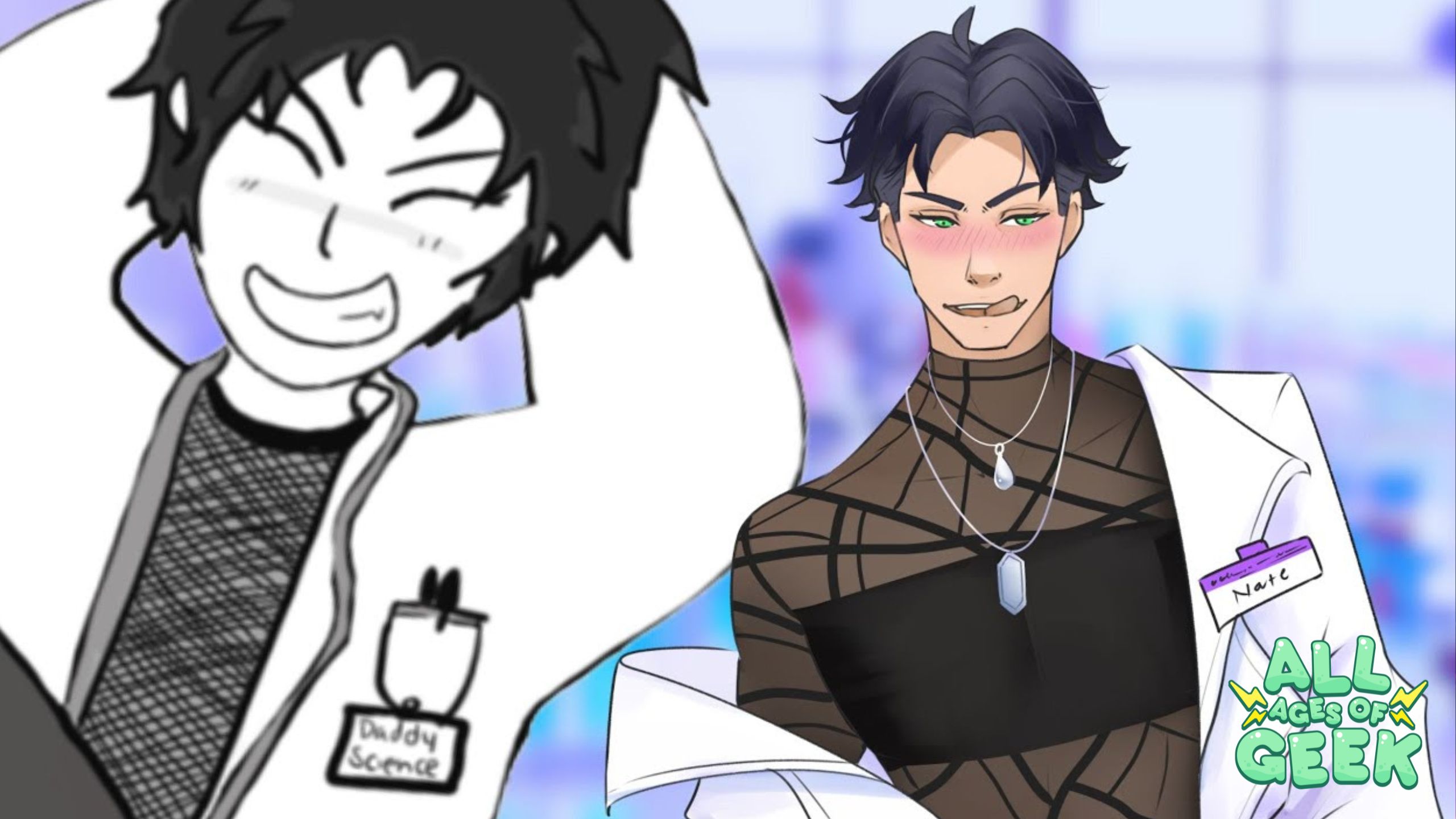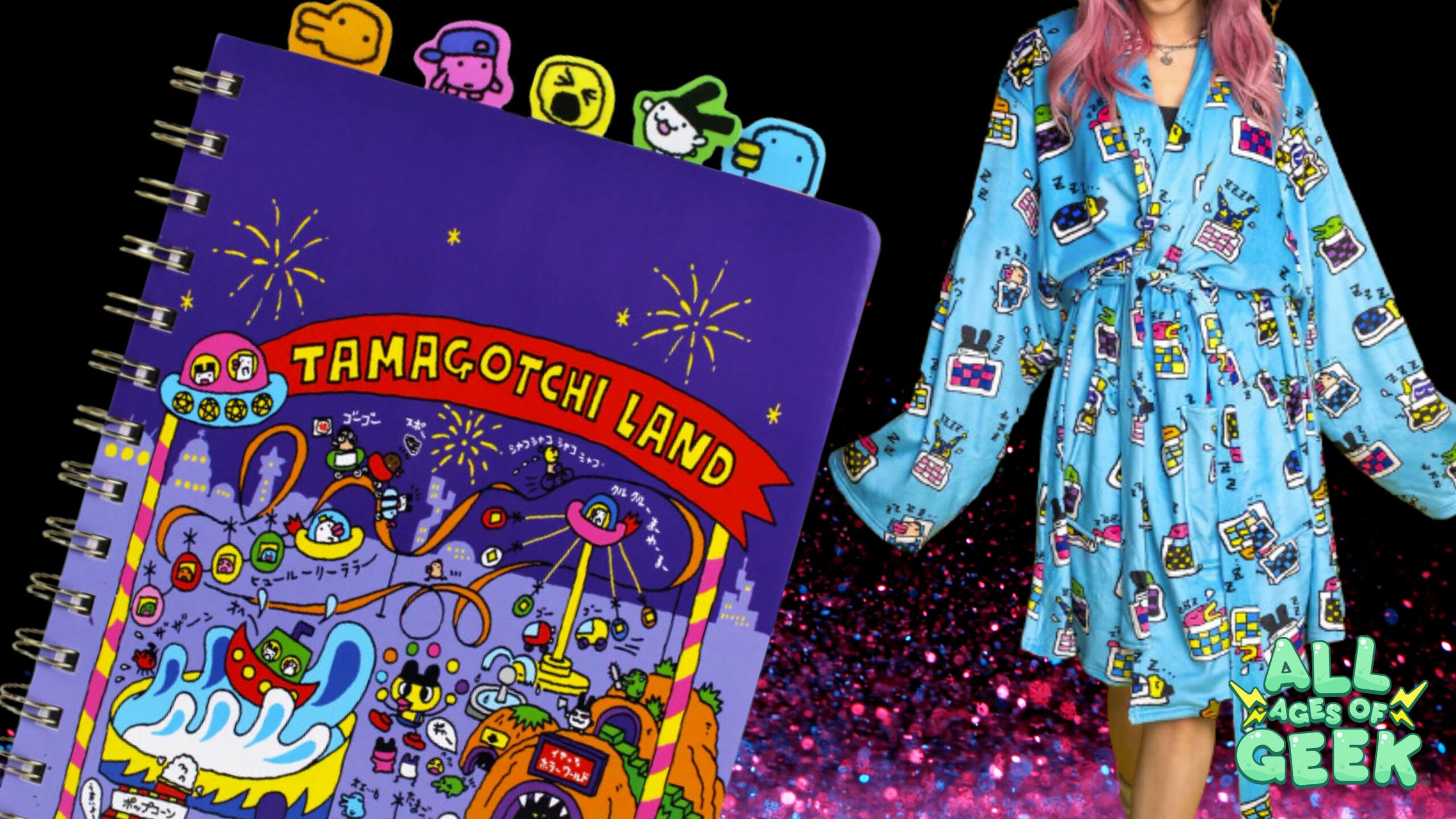Fan of The Sopranos? Then The Gullfather: Birdsy Seagull will have you squawking with laughter, as you dive-bomb into the feathery underworld of wise-cracking mobsters. Welcome to another exciting feature of “Creator Spotlight”! Today, we have a real treat in store for you as we dive into the world of storytelling with two of the most accomplished and versatile talents in the industry. Please join us in extending a warm welcome to Jeff Sikaitis and Jake Wheeler.
From Emmy-winning interactive documentaries to innovative branded content and now, their debut graphic novel, The Gullfather: Birdsy Seagull, these creative powerhouses are here to give some advice and talk about their success. Stick around as we explore their fascinating journey, their experience working with major brands like Comedy Central, Sports Illustrated, and Viacom, and the inspiration behind their latest project. Let’s get started!
What inspired you both to become writers and content creators in the entertainment industry, and how did you get started on this path?
For both of us there was always a latent desire, but the idea that we could we could make a profession out of what we were doing naturally – telling stories, joking around, creating larger than life ridiculous characters and worlds – that seemed like a stretch. Early on, we started getting some feedback that we might have some talent, although untrained, so we jumped at every opportunity, and found that even when struggling it was a blast. There was no clear path but it was fun, and honestly, that allowed us to work crazy hard, like insanely hard. From there, some things stuck, some didn’t, but always, even today we still try to keep that spirit that this is an adventure and we’re lucky to be living it.
How did you approach creating a book that would appeal to both reluctant and avid readers, and what strategies did you use to make the book engaging and visually stimulating?
You know that line in old tv shows, “it’s so crazy, it just might work.”? It was kind of like that. It started, like most of our things, with an amusing and absurd core nugget: a crime family of seagulls. Something we could have fun kicking around ourselves. Then as we unpacked it, we saw we could make a story, one that would have the humor and action for a more reluctant reader, but in leaning on some of our sitcom story work, we thought we could elevate it a bit for more dedicated readers. Spending a lot of time in both film and advertising, we had a desire to create an interesting visual palette, and we were able to not only find some high-end illustrators but already had the experience working with visual artists so we were able to collaborate in a way that produced a great result.
Can you share some of the unique ideas and elements that you are bringing to the market for middle grade literature with “The Gullfather: Birdsy Seagull”?
Even though The Gullfather himself is the series lead, we think we’re bringing the ensemble comedy you see in some of the great sitcoms with a wonderful cast of characters. There’s also a slightly more refined color palette. The other thing that we hope that we can create is this notion of “shared entertainment” between kids and their parents and while the primary audience is kids, we have layered in jokes and references that would appeal to the grownups and those who haven’t quite grown up yet.
What motivated you to pivot and start writing books for middle grade readers, and how did your previous experiences in the entertainment industry inform your approach to creating children’s literature?
We wouldn’t call it a pivot so much as just another creative avenue. We’re still developing everything from picture books to tv series. As creative people, finding a new sandbox is always thrilling. And this particular sandbox – middle grade lit – allows us to indulge the 8-year old kid within us. We could be a little more silly in this format, which made it incredibly fun.
For young readers who may be hesitant to dive into traditional novels, how can graphic novels like “The Gullfather: Birdsy Seagull” be a great way to spark a love for literature?
One thing we say is that right now, reading is filled with “shoulds”. So we hope this becomes a “want” not a “should”. We’d like to think you don’t have to pull any teeth to get a young boy to read about The Gullfather and his motley crew. We want it to be as joyful as it is exciting. If we can give kids visual pop, good jokes, humorous situations and iconic characters you want to see again and again, it will feel different than all the things kids “should” read and hopefully open the door to a life of reading.
What can readers expect from future installments of “The Gullfather” series, and what other projects are you currently working on?
We’ve got big plans for Birdsy and his Crew with a few new books in the early stages. We want to keep developing the characters on the personal dimension while pushing their overall mission to keep Shoretown safe for their fellow gulls. Which means that while some adventures and quests will be more one-off, we want to introduce longer-running enemies and bigger arcs, just like you would find in a tv series. But specifically, expect to see a lot more of “Sweat Beak” and “Mickey Brains” who we teased in book 1 and then the introduction of some Shoretown baddies.
Jeff and Jake, can you share any specific experiences or challenges you faced while working on “The Gullfather: Birdsy Seagull,” and how did you overcome them as a team?
We were working in different places (Jeff is in Connecticut while Jake is in Montana), in addition, some of our illustration team was in Spain and some in Taiwan. Aside from that, this is a newer format for us, so just things like learning what works best in this format, learning about good layouts and trusting the illustrators to do their thing, which they’re quite good at. I think when the process is fun and you treat it like an exploration, it’s much easier to get through difficulty than when you put undue weight or expectations on them. If you can’t have fun with these characters, then maybe you gotta hang it up.
What advice would you give to aspiring writers and content creators who are looking to break into the entertainment industry or publish their own books?
Volume, volume, volume and, guess what, more volume. You have to write a lot, to write through your problems, write to solutions, write to see what you’re bad at, write to get better, write the wrong joke so you can write the right joke. You can read and hear a lot of things about the craft, but until you come up against it, you really don’t understand it. Same is generally true in life, right? The 10,000 page rule (or 10,000 Hour Rule as Malcom Gladwell phrased it) is real. In our culture today we see a lot of instant fame, and even we ourselves had some early successes, but the volume is so important to apprehension of craft. Also, you can’t get to the volume if it’s a chore for you. Find a way to love something (or hopefully everything) about it and the volume will come. That journey will tell you any more that we can. And as the great Sam Hinke says “You have to trust the process” and the process is putting in the work, doing the reps and experimenting til you have found your tone, voice and creative rhythm.
What was your inspiration for creating a seagull crime boss as the protagonist of “The Gullfather: Birdsy Seagull”?
We were at a beach watching how seagulls act. They’re funny, relentless and super obnoxious. We saw them act as a gang to try and get food. We were talking about old time gangsters, and when Bugsy Siegal came up, it hit us Siegal – Seagull. Insteady of Bugsy, we came up with Birdsy. After that it was too fun to stop so we kept running with it. It was one of those moments for us where the environment just slowed down and we are able to see these different seagull interactions play out in front of us (a seagull stealing a snack, two other seagulls squawking at each other, another seagull on his perch watching all the madness ensue) and we were just entertained by these mob-like gulls.
How did you balance the humor and lightheartedness of the book with the more serious themes of loyalty, family, and responsibility?
That’s always a trick in life as well as writing. In this project, the humor comes against the backdrop good intentions which don’t always go well. Being well meaning earns some grace to be odd or impetuous or overzealous. These birds like all of us have flaws and those flaws, instead of making us unlikeable, actually make us very likeable if drawn out in relatable and sympathetic ways. So that backdrop of responsibility is really important to creating multidimensional characters.
What role did the illustrations play in bringing the story to life, and how did you work with the illustrator to ensure that the visuals matched your vision for the book?
We always had a vision of premium, almost movie-like visuals. Given our backgrounds working with cinematographers, art directors and illustrators, we’ve been able to see high-quality tastes and crafts up close and strive for that. But it’s more than just creating an aesthetic, there’s a dynamic in how an illustrator thinks. They “see” story different than a writer does, and they have experience letting a picture not only drive emotion but capture the energetic essence of a scene. Additionally, the right artists can break down the pane structure in ways that help a story literally come out of the box and flow better. So we cast a wide net and talked to people in the industry. Then in working with the illustrators, we would have open discussions, try things, and discover when it was best to give pretty granular instruction and when to trust their craft and instinct and let them surprise you.
What makes “The Gullfather: Birdsy Seagull” stand out from other middle grade books on the market, and why do you think it will appeal to readers of all ages?
We think there’s a blend of both childish silliness and maturity that stands out a bit. In one sense, these are birds, and birds will always be viewed a little more silly, and yet they’re “grown up” birds, with big bird problems – caring for their citizens, providing for others, concern for the environment, situation that give an element of conscientiousness.
Also it’s a new story-verse that hasn’t been explored for kids. We find many parts of the genre from the characters, the food, the clothing and especially the nicknames – one of the most underrated parts of the mafia genre lend themselves well to humor. We think we have some great characters with some very sticky nicknames – Sweet Beak, Quack Quack, One-Wing and so many others.
Can you describe your writing process for “The Gullfather: Birdsy Seagull,” from the initial idea to the finished product?
In the early early stages it’s just, “is this fun, funny, could this work?” Then if it feels like it has some legs we ask, “who are these birds, what do they want and need broadly speaking and what roles do they play in their world and in their group?” In terms of the first book, it then becomes, “ok, what is the particular problem, how do they respond, how do their personalities make the problem better or worse?” In parallel there’s the visual development, first at the character level, then the overall tone of the world, landscape and settings. How to evoke the timeless gangster touchstones and yet create freshness. As it comes together there’s adjustment on the story level and the page level. Then there’s the logistical process of getting it into the publishing workflow, which is another whole thing.
What were some of the most rewarding aspects of creating a book for middle grade readers, and how did you engage with your target audience throughout the writing and publishing process?
For us, making the book fun was not just an option but a requirement, which made it fun to do. You give yourself a lot of license when you play in this kind of sandbox from the start. It was great to collaborate with talented artists and with each other. But overall, just to remember the fun of writing, and hopefully create that kind of ride for the reader as well.
How has your experience creating branded content and advertising informed your approach to storytelling in “The Gullfather: Birdsy Seagull”?
In branding a hook is important, and the one we’re using for The Gullfather – Sopranos for 7-year olds – always got some sort of reaction. It was memorable. Because of our backgrounds we’re always thinking about how to connect with people, to be breakthrough in clear, succinct ways, and that’s especially important in a world awash in titles.
What are some of your favorite middle grade books and authors, and how have they influenced your own writing?
We are big fans of Caveboy Dave – it has a great blend of smart and silly and is so layered. And on a recent trip to England we were introduced to the stories of David Walliams and Gangsta Granny – and we loved the humor and heart in that. And then of course we are big fans of Andy Griffiths (Tree House Books), Dan Pilkey (Captain Underpants) and Lincoln Pierce (Big Nate).
What message do you hope readers take away from “The Gullfather: Birdsy Seagull,” and how do you hope the book will impact its audience?
There’s a sort of meta-message that reading can be fun and adventurous and visually powerful. Perhaps it can compete with the screens. And then there’s the message conveyed in the story, about family and responsibility and how we all need a crew. We want kids to have a blast reading it. To laugh, find awe in some of the visuals, and bond with the characters. It would be a privilege to keep giving them that.
Jeff and Jake, can you describe your working dynamic as co-creators and how you collaborate on projects?
Working together for so long there’s a lot of trust and comfort, both in terms of the creative process, but also in balancing other life demands. On the creative front, this idea wouldn’t have even started if we didn’t have the freedom to throw out random and weird concepts to each other. There’s a tendency to build on each other first before applying the critical lens. That allows us to be explorative, to go off on tangents and before reeling it back in and grounding it. Plus when you’ve been friends for this long, having fun becomes a very big element of work so that it feel much more satisfying and exciting than just “work”.
What advice would you give to parents, educators, and librarians who are looking for engaging and educational books to recommend to young readers?
We all want what’s best for kids, but sometimes we don’t think like kids. How can we straddle those roles of both steering their reading / education while also being empathetic to what moves them, not just what edifies them? At a certain level we should celebrate reading in all its joyous forms. Also, we’re in a highly visual age and there are many more lifestyles and careers in areas like graphic design, branding, interior design, and the visuals can be an inspiration as well. We would urge those making book lists to be open and construct their lists with a surprising and diverse mix of tones, styles, formats and topics.
Finally, what can we expect from you in the future, and are there any new projects or collaborations on the horizon that you can share with us?
Much like Simon & Garfunkel, we have a number of projects both collaborative and solo efforts. Jeff has recently finished another graphic novel series The Magic Paper Society and a recently released kids franchise, Oddfsh, as well as picture book series My Funtastic Neighborhood. Jake helped develop the tv series Rennervations, with Jeremy Renner which is airing on Disney+. (premiers April 11). He’s also shopping a comedic sci-fi pilot called The Earth Is Nice This Time of Year, and a picture book series, Winnie & Walloughby.
ABOUT THE BOOK
“It’s The Sopranos for 7 year olds.” – Anselmo “Sweat Beak” Rossi
A misfit mafia of seagulls try to stay the top birds in Shoretown despite their many blunders and bonehead decisions.
The Gullfather: Birdsy Seagull rules the roost with a fistful of feathers. And with a little help, but not much, from his ragtag crew – the salty mouthed Joey “One-Wing”, the handsome slacker Vinny, the glamorous and dangerous Birdabella, and Birdsy’s well-fed enforcer, Quack Quack.
They say they will stop at nothing to be the top crime birds on the boardwalk, but they pretty much stop at everything, snack time, nap time, or any other reason, much to Birdsy’s ire. Well, actually, Birdabella will stop at nothing, and that is a bit of a problem in the other direction. In the first book in the series, “A Seahawk Situation”, Birdsy and his crew are at war with the owners of the boardwalk eatery, Zen and Out, after they erect a wooden security seahawk to scare the gulls of Shoretown. Things escalate quickly after One-Wing battles Seymour the Wooden Seahawk and Vinny starts an indoor fireworks display. In retaliation, Joey “One-Wing” gets birdnapped, and Vinny is almost made into curry, but just when Birdsy has nowhere left to turn, Birdabella, the wild card enters. Will Birdsy remain “king of the boardwalk” or will the humans get the upper hand and start to encroach on the empire he and NonnaBird built?
The adventures of Birdsy and crew are filled with absurdity, action, silliness and adventure – everything that young readers want in a new series. Central to the story however is the heart of this oddball family, all brought to life in a dynamic, arresting visual graphic novel format. The book will appeal to readers of Bad Guys, Caveboy Dave, Last Kids On Earth and Dogman.
Social










